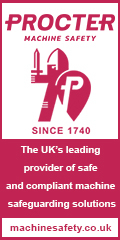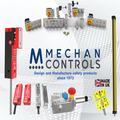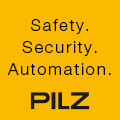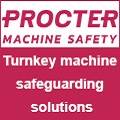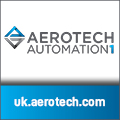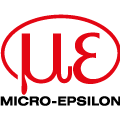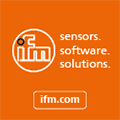
Posted to News on 24th Nov 2016, 15:36
How ERP supports the engineer-to-order approach
Rapidly increasing demand for customised products has led to a ramp-up in the number of engineer-to-order (ETO) manufacturers over recent years. In line with the growth in digital routes to market and the rise of servitisation as a core manufacturing methodology, consumers have become attuned to having product offerings tailored to their preferences and are often prepared to pay a premium for this level of service. Fabrizio Battaglia, Head of Manufacturing & Distribution, HSO, discusses how ERP supports the ETO approach.

This focus on customised products is leading to a corresponding growth in servitisation, incorporating a feedback loop to capture the customer's likes, dislikes and recommendations about product design, delivery and support.
Suppliers who fail to react to these changes risk losing out on potentially lucrative bespoke manufacturing and after sales service revenue streams. Customers often value superior service over price, but mass-volume manufacturers, worried about having their margins squeezed, have often failed to deliver a service-led approach.
ETO manufacturing, with its emphasis on designing to meet customer specifications, fits the new service-focused environment well. That said, increasing customer demand is ramping up the pressure on manufacturers in this space to move quickly to meet the needs of their target markets. Indeed, with the final product in the ETO manufacturing market often an original one-off creation, it is key that manufacturers are able to streamline workflows and cut lead times.
Simply continuing to work in the same way they have done in the past is no longer a viable option. Existing legacy approaches will not provide the agility these businesses need to access data more easily, manage it more effectively and use it to deliver a more tailored and personalised customer service offering. However, moving from that realisation of the need for innovation to actually taking the plunge is not always easy.
These kinds of manufacturing companies are often saddled with complex quotation and ordering processes. They have established ways of handling workflow and are wary of technology that they see as a potential constraint. Yet, that said, manufacturers increasingly appreciate the need to change. So how can they best address the challenges and capitalise on the opportunities that ETO manufacturing brings to achieve faster time to market and sharper competitive edge?
First, it's important to understand that making the transition to a new way of working is not just a purely technological decision. Often, it's just as much about manufacturers reviewing the way they work and finding a partner capable of helping them rethink their approach and put in place systems to support. It's important too that this is a steady, evolutionary process that enables the manufacturer to gain internal buy-in at each stage as it moves step by step to a new methodology.
Improve collaboration
Enterprise resource planning (ERP) will provide a critical part of the solution for many manufacturers - helping manage each complex project end-to-end while providing a platform to improve collaboration and respond faster to market needs; minimising re-engineering and reducing risk.
Arguably, the key benefit of ERP in this context is that it provides a way for the manufacturer to view all-in-one-place the complete range of information it needs to deliver an efficient ETO service. Manufacturers can view details of open orders, prices, and preferred vendors, and see the impact on production, finance, and procurement. They can control the quality of products and the efficiency of their design and production throughout the product lifecycle.
ERP brings further key benefits through its seamless connectivity and alignment with other related systems. Integration with standard product lifecycle management (PLM) systems could link engineering to production. The use of product configurator software can help configure products, services, projects, and quotes for customers and provide the sales team with a resource to generate complex quotes and proposals.
Materials requirement planning (MRP) software can help the manufacturer buy common parts for use across multiple projects. ERP can also provide full product traceability from requisition to inventory. Reporting/business intelligence, data analytics can be integrated to drive real-time analysis and faster and more informed decision-making while the cloud, mobile, and business apps can help enhance collaboration and drive business efficiencies.
Taken together, all this allows ERP to manage every complex project that the ETO manufacturer takes right through from quote to service delivery, and this, in turn provides complete transparency on the whole process with regard to costs incurred, resources used and interactions both within and between departments.
Ultimately though, the customer needs to be at the heart of the ETO manufacturing approach, and the best ERP platforms support this capability also. Integrated product configurators enable consumers to see the different available versions of a product online and choose the exact specifications they want. The customer is effectively becoming part of the production line. The tight integration between different processes and systems that ERP can deliver helps makes this possible as does the flexibility and scalability offered by the technology. And the use of servitisation and the feedback loop play into this approach also. After all, the more information the ETO manufacturer knows about the customer the more it can improve its service to them - and moving forward that will be key to the success of the whole ETO sector.
Looking ahead, HSO is confident that if ETO manufacturers continue to focus on customer service and deliver a servitisation approach based on flexible ERP technology, their future prospects and those of the sector in general will look increasingly bright.
For more about ERP technology please visit www.hso.com/uk.
Want the latest machine building news straight to your inbox? Become a MachineBuilding member for free today >>
1st Floor, Green park
100 Brook Drive
RG2 6UJ
UNITED KINGDOM
+44 (0)20 3128 7767



